Phorum Dalal chats with die-hard Undhiyu fans who swear by its roots and technique, and unlocks some of its secrets by visiting one of Mumbai’s oldest establishments serving the dish
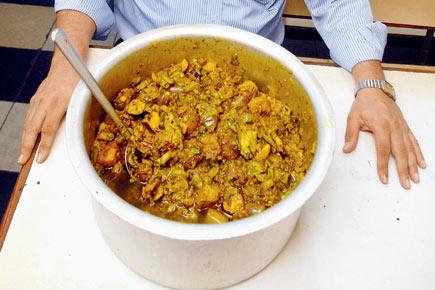
Food, Undhiyu, Gujarati dishes, winter food, Food special, Mumbai
Mention Undhiyu and watch a Gujarati’s face light up as he/she swears by all things worldly that the version he/she grew up eating is second to none.
ADVERTISEMENT
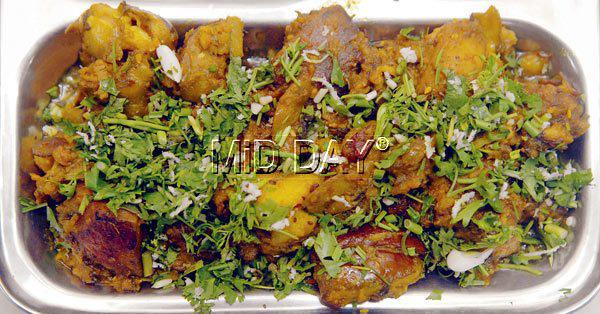
Undhiyu gets its name from the term ‘undhu’ which means ‘upside down’ in Gujarati. PICS/SHADAB KHAN
A delicacy made of winter vegetables, Undhiyu comprises Surti Papdi (an Indian bean that grows in Surat), kand (purple yam), sakariya (sweet potatoes), rajgiri kela (banana), arya kakdi (seedless, zucchini-like cucumber grown in Surat), brinjal, and muthias (steamed and fried wheat balls) — all slow-cooked in a masala of green garlic, green chillies, coriander and
grated coconut.
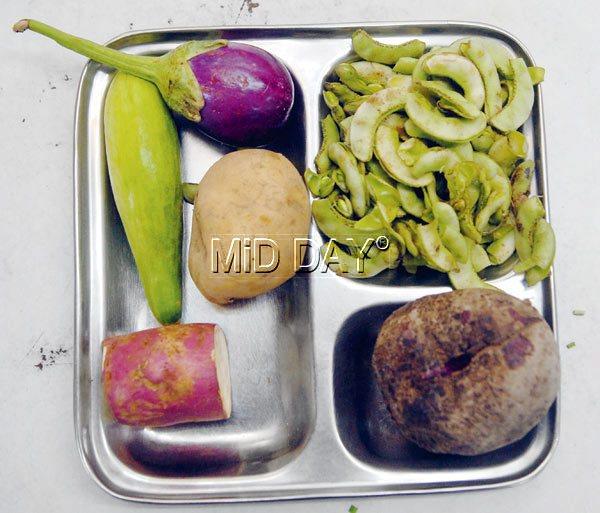
Undhiyu is made of brinjal, Surti papdi, Kand (purple yam), Sakariya (sweet potato) and Arya Kakdi (cucumber)
Being a Gujarati, I, too, grew up eating Undhiyu, but the version I have come to swear by is the one my mother-in-law makes. Fifty-year-old Dipti Dalal’s eyes brighten up at the very mention of Undhiyu. “Making this dish is a very tedious affair, as the preparation of just its ingredients takes all day. Add to that another four hours to cook the dish.
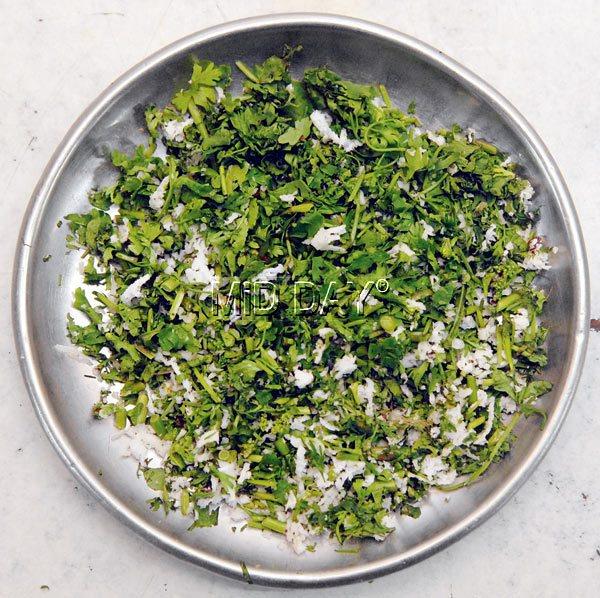
Finely chopped coriander and grated coconut, some of the dishes core ingredients
But when I was a child, every member of the house gave a helping hand. All of us would sit in a circle to clean and chop the vegetables, roll the muthiyas, grate the coconut and grind the masala. Communal cooking simplifies the process,” says the Andheri resident, who unfailingly makes the Undhiyu every year during winter. “When I plan to make Undhiyu, I draw up a list of all my friends and neighbours who love the dish, and make it a point to send it across to them. Undhiyu, after all, is a
community delicacy of sorts, so you always make it in bulk,” she smiles.
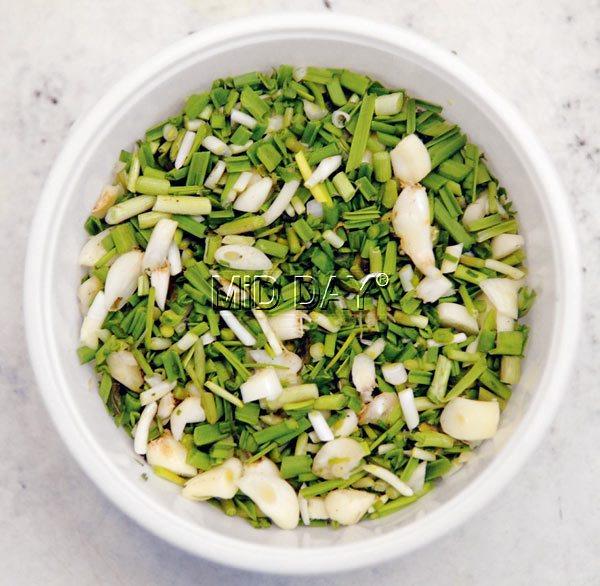
Chopped green garlic and spring onion used for Undhiyu’s preparation
First, there was Umbadiyu
Undhiyu gets its name from the term ‘undhu’, which means ‘upside down’ in Gujarati. It has its origins in the Umbadiyu, a dish farmers cooked in an earthen pot buried in the earth and set to fire.
“Today, we eat an evolved version of the dish, which is made in large vessels or a cooker at home. There are two types of Undhiyu — one which has garam masala and the Surti Undhiyu, which is more popular and is made with the green masala,” says Rushina Munshaw Ghildiyal, food writer and founder of APB Cook Studio.

All the way from Surat
Surat is 280 km away from Mumbai, but this city is lucky to get a decent supply of fresh vegetables for Undhiyu from the neighbouring state every day.
Gaurang Shah, co-owner of 80-year-old Hiralal Kashidas Bhajiawala at CP Tank, is one of the few in the city who can claim to cook authentic Undhiyu. He makes five to 50 kg of the delicacy daily, and ensures his cooks replicate his grandfather’s age-old recipe using vegetables sourced all the way from Surat.
“My vendor in Surat sends me the supply every day. We make authentic Undhiyu, which is cooked in groundnut oil without any water. The vegetables are first layered in a large vessel — the first layer is of papdi, which takes the longest to cook, followed by kand, brinjal, aloo and kela. Muthias are placed last (at the top), so they don’t fall apart as we begin cooking the dish.
The vessel is topped with coriander and coconut masala. This is the same masala that’s stuffed into each vegetable piece by making a cross-incision,” says Shah, whose grandfather was a caterer in Surat for decades before they moved to Mumbai.
“He cooked elaborate wedding meals and if the guests knew he was the caterer for the evening, they didn’t miss the feast for anything. Today, my 63-year-old brother, Bakul, and I run the shop,” says Shah, who remembers helping out at the shop as a child during busy days and festivals. “My grandfather passed away when I was five, but we had cooks who were trained under him. The taste of our Undhiyu is consistent because every ingredient is acutely measured and added to it,”
says Shah.
Shah knows he is doing it right. Numerous patrons across the city throng his shop during the winter since 30 years. “They often tell me how they were introduced to our Undhiyu by their parents. And while the old generation still wants their share of oil in the dish, the younger lot does ask us to drain excess oil. I always tell them, ‘You need a little grease to keep the bones supple! Work it out in the gym if you like, but enjoy the Undhiyu as it is’,” laughs Shah.
Hiralal Kashidas Bhajiawala has started selling its Undhiyu, but we await that nip in the air. When we call 92-year-old Maganji Purohit, the owner of the 70-year-old legend, Thakkar Bhojnalaya at Kalbadevi, and enquire about the availability of Undhiyu this year, he says, “When all the green veggies are in stock and are of good quality, only then will we serve the Surti delicacy.”
So, while the city markets stock up their Undhiyu ingredients, we suggest you nurture a king’s appetite to savour the traditional dish. While the winter delicacy is devoured on its own, it goes well with a serving of white rice and Gujarati kadhi. “Every household has its traditional recipe, but one thing is common to all Gujarati homes who love their Undhiyu — we slip into a leisurely, deep slumber after the meal,” Dalal signs off.
 Subscribe today by clicking the link and stay updated with the latest news!" Click here!
Subscribe today by clicking the link and stay updated with the latest news!" Click here!






